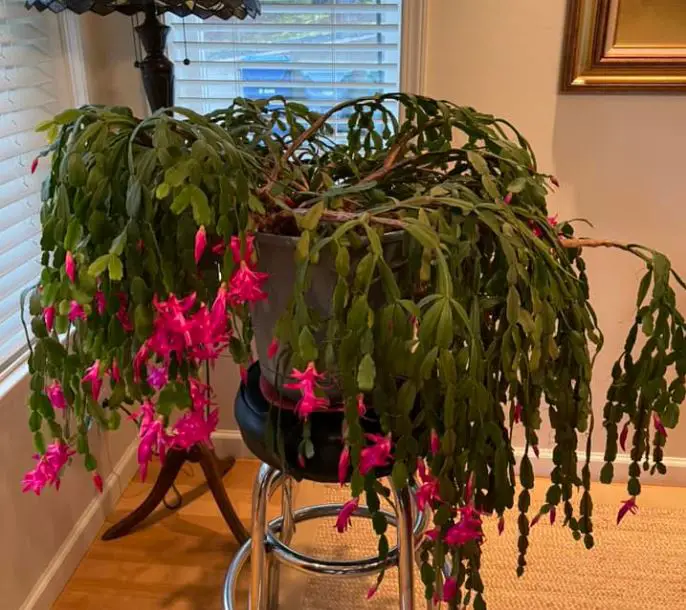Christmas cacti, or Schlumbergera, have become a cherished fixture in many homes, particularly during the festive season. With their dazzling, tubular flowers that bloom in hues ranging from vibrant reds to soft whites, they don’t just thrive in terms of aesthetics, they also possess an impressive lifespan. Understanding how long these plants can live is essential for any gardening enthusiast or simply those wishing to keep a little color in their lives year after year. So, how long can a Christmas cactus live? The answer may surprise you.
Typically, with appropriate care, a Christmas cactus can live anywhere from 20 to 30 years, which positions it as a generational plant. However, exceptional specimens have been known to outlive their owners, thriving for over 50 years. This longevity is not merely an arbitrary fact; it is rooted in the care and environmental conditions provided to these delightful plants. To dive into the intricacies of a Christmas cactus’s lifespan, we must explore several key factors that influence their longevity.
Recognizing the natural habitat where Christmas cacti thrive helps elucidate their lifecycle. These epiphytic beauties hailing from the tropical rainforests of Brazil flourish in conditions that mimic their native environment. This means they thrive in a semi-shaded location with high humidity and well-drained soil. The proper balance between sun exposure and moisture is vital; too much direct sunlight can scorch their leaves, while inadequate light can inhibit flowering. Additionally, their unique adaptation as epiphytes allows them to derive moisture from the air and their surrounding ecosystem, which informs how they should be cared for indoors.
To ensure your Christmas cactus remains vibrant for decades, various aspects of care require attention.
Watering practices are perhaps the most crucial component. Unlike their desert-dwelling relatives, Christmas cacti prefer to dry out slightly between watering. Overwatering is detrimental, potentially leading to root rot and the untimely demise of your cactus. A good rule of thumb is to water once the top inch of soil feels dry to the touch. During the blooming season, which typically occurs in late fall to early winter, increased humidity is essential. Regular misting or placing the plant on a pebble tray filled with water can help create an ideal environment.
Equally important is the nutritional regimen of your Christmas cactus. As the plant grows, it requires a balanced fertilizer, particularly during its active growth phase in the spring and summer months. Using a diluted, water-soluble fertilizer will ensure that it has the necessary nutrients to support its vigorous growth and prolific blooming. However, it is wise to exercise caution—over-fertilization can be harmful, stunting growth or damaging the roots.
Temperature fluctuations also play a pivotal role in a Christmas cactus’s lifespan. These plants thrive in a range of about 60-70°F during the day and prefer slightly cooler temperatures at night. Avoid placing your cactus near drafty windows or heating vents, as sudden temperature changes can induce stress. During the holiday season, when blooming occurs, a slight drop in temperature can sometimes encourage those lovely flowers to emerge. A balance of warmth during the day and cooler evenings can coax these beauties into full bloom.
In addition to environmental factors, the potting system must not be overlooked. Planting your Christmas cactus in a pot that allows for drainage is essential. A clay or terracotta pot is typically favored, as these materials help regulate moisture levels more effectively than plastic. Repotting every few years is critical, as overcrowded roots may hinder growth and flowering. When repotting, it’s vital to use a well-draining potting mix specifically formulated for cacti and succulents.
Finally, understanding the lifecycle of your Christmas cactus opens the door to its remarkable resilience. These plants can easily be propagated, offering a pathway for new life to flourish from an old favorite. Historically, plants passed down through generations become heirlooms imbued with memories and connection. Simply take a healthy stem cutting, allow it to dry for a day, and then plant it in your preferred mix. With time and adequate care, a new cactus will grow, carrying on the legacy of its predecessor.
As we ponder the longevity of the Christmas cactus, it’s important to remember the role of human interaction. Each nurturing act conveys not only care but also fosters a relationship that brings vibrancy and shared joy. Decorated with vivacious blooms during the holidays, Christmas cacti serve as a poignant reminder of both the beauty of nature and the bonds we forge with the living entities that inhabit our spaces. When cared for effectively, your beloved Christmas cactus can adorn your home and heart for decades, transforming it into more than just a plant—into a cherished member of your family.
In conclusion, a Christmas cactus embodies the delicate blend of nature’s artistry and human affection. With proper care, it can live a gratifyingly long life, bringing colorful life to your home for years to come. Understanding its needs and nurturing it diligently allows for a rewarding journey, marking each blooming season with a renewed sense of wonder and appreciation for these enchanting plants.





Leave a Comment